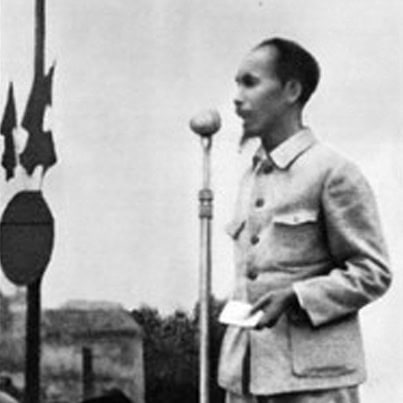
Vietnam Will Emerge as a World Leader
Author: Chris Freund, Partner, Mekong Capital
May 2, 2020
———
Vietnam contained COVID-19 at 270 cases, 0 deaths, and has had no new locally transmitted cases for over two weeks. Vietnam is the first large country to defeat COVID-19.
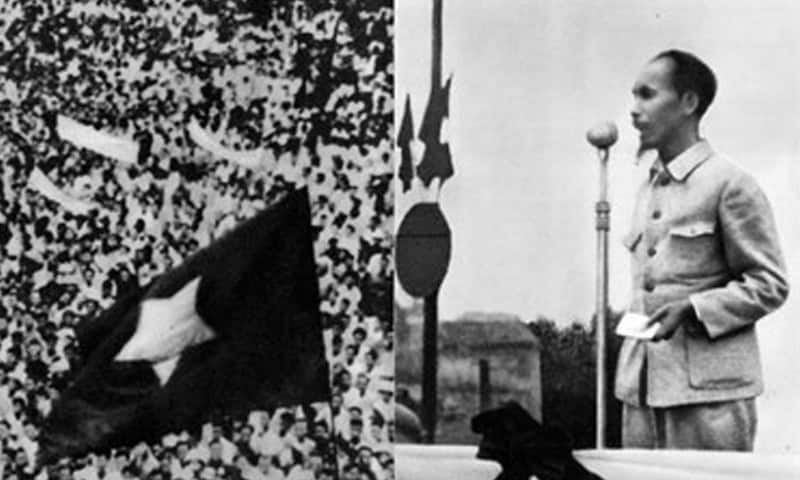
Vietnam achieved this based on strong leadership and coordinated action, starting with the national government. As soon as the crisis emerged in China in January, Vietnam sprung into action. Vietnam shut schools in early February. Vietnam restricted travel and visas, quarantining people arriving from overseas, and ultimately closed its borders. Vietnam implemented contact tracing and strict quarantines on anyone who may have been exposed [1]. Vietnam provided extensive transparency about known cases [2], to the extent that even the home address and place of work of anyone with COVID-19 become public information. And Vietnam conducted extensive testing. With 650 tests per confirmed case, Vietnam has the highest ratio of testing to confirmed cases in the world. Vietnam took early and decisive action and won the battle with COVID-19.
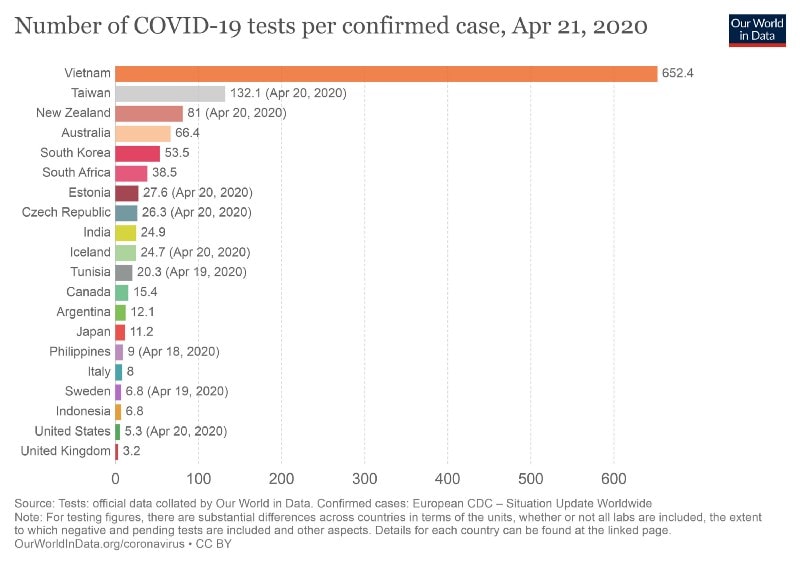
Source link
Vietnam was also the first country to be able to reopen safely, and this is probably many months before most other countries will reopen. Vietnam’s GDP is still expected to grow by around 4.9% in 2020 [3]. Contrast this with the U.S. with more than 1,100,000 cases of COVID-19, which continue to spread rapidly: the estimated decline in the U.S. GDP is 5% for every month of partial shut-down. So, for example, three months of partial-shutdown would lead to a 15% decline in the U.S. GDP [4].To understand why Vietnam responded so effectively to this imminent crisis, and more importantly, how Vietnam has the experience, mindset, values, and capability to play a very important role in the future of the world, let’s take a journey through Vietnam’s past, present and future.
A BRIEF LOOK INTO HOW VIETNAM’S HISTORY SHAPED WHO IT IS TODAY
Liberation from Chinese colonial occupation
Vietnam had been under colonial occupation by China for more than 1,000 years. This period introduced Chinese cultural influences such as Confucianism that continues to this day in terms of the great value that Vietnamese put on education and family-orientation. However, all people yearn for freedom and self-determination, and Vietnam was no exception. The Vietnamese people were committed to their independence and freedom.
The earliest revolts against the Chinese colonial occupiers were led by Vietnamese women, such as the two Trung sisters and Lady Trieu. This suggests that ancient Vietnamese civilization was matriarchal, or at least had strong female leadership, something which persists to this day.
After centuries filled with attempts to establish Vietnamese independence, in the 10th century, at the first battle of the Bach Dang river, General Ngo Quyen used clear strategic thinking, anticipating the moves of the Chinese army & navy, to trap and defeat the colonial occupiers. This victory liberated Vietnam from 1,000 years of colonial occupation. From that victory onwards, the Vietnamese people would be strongly committed to maintaining their freedom and independence.
Vietnam’s first emperor
After the defeat of the Chinese and after Ngo Quyen’s death, it was initially a chaotic period for Vietnam. Twelve feudal warlords were fighting for control of the country. And there was still a threat that the Chinese would re-invade and try to take back their former colony. Out of this chaos emerged a great leader, Dinh Bo Linh, also known as the First Emperor of the Dinh, or Dinh Tien Hoang. In 968, Dinh Bo Linh named himself “emperor” and re-named the country “Dai Co Viet”, an act of officially declaring independence from Chinese rule. As Vietnam’s first emperor, he united the country and created the infrastructure for a state, such as the judicial system, while embracing Buddhism.
Buddhism’s golden era in Vietnam
From the Dinh dynasty in the 10th century onwards, the study and practice of Buddhism were embraced as the national faith. Ly Thai To, the founder of the Ly dynasty in the 11th century, was raised in a pagoda and launched a golden era for the study and practice of Buddhism, which lasted for the next 400 years. Pagodas and temples flourished, while the Vietnamese people practiced mindfulness, peace, and detachment, which is central to Buddha’s teaching.
Defeating the Mongol invaders
In the 13th century, under imminent invasion from the Mongol Empire led by Kublai Khan, Tran Nhan Tong — the emperor at the time — appointed General Tran Hung Dao as commander-in-chief to defeat and repel the Mongol invaders. Following in the footsteps of Ngo Quyen, Tran Hung Dao aligned the country around a common goal and led the second battle of Bach Dang River. The invading Mongol army and navy were trapped, isolated, and defeated in the Bach Dang river, similar to the first battle of Bach Dang four centuries earlier. Seven centuries years later, Vietnam would use a similar approach to align the country around a shared goal, and then isolate, surround, and defeat Covid-19.
In total, Vietnam successfully repelled three attempts by the Mongols to conquer Vietnam, and Vietnam distinguished itself as the only country on mainland Asia never to be conquered militarily by the Mongol invaders.
Later on, Tran Nhan Tong decided to pass the Emperor role to his son and become a Buddhist monk. He eventually founded the Truc Lam sect of Buddhism — a Vietnamese version of Zen Buddhism. He traveled around the country and taught zen meditation and other practices until his death.
Mother goddesses and female Buddhas
Concurrent with the practice of Buddhism, Vietnam maintained a deep heritage of mother goddess worship, which flourished alongside Buddhist practices. Tracing back to matriarchal traditions from long ago, combined with goddesses such as Po Nagar introduced by the Cham people (who emigrated from India), as well as female Buddhas such as Quan Am, Vietnam has a vibrant history of beliefs in mother goddesses, fertility goddesses, and female Buddhas. Some of these traditions, such as Hau Dong, involve invoking trances and channeling the spirits of various mother goddesses. There has been a revival of these traditions in recent years.
The French colonial occupation and then WWII
In the late 19th century, France started its colonial occupation of Vietnam. This was a period in which many Vietnamese lost their land and were forced into a peasant class, educational standards deteriorated, opium abuse proliferated, and a massive gap emerged between the rich (Colonial occupiers and a small group of wealthy Vietnamese) and the poor masses. Then the 20th century brought WWII and the Japanese invasion of Vietnam. By 1945, Vietnam’s rice supplies were redirected to the Japanese military, leading to the death by starvation of 1,000,000 Vietnamese people.
Ho Chi Minh’s Declaration of Independence
During this period of national crisis, on the 2nd of September 1945, Ho Chi Minh declared independence for Vietnam [5]. The people of Vietnam were inspired about a free and independent Vietnam on the basis of Ho Chi Minh’s assertion that all people in the world are free and equal, and his declaration to the world on behalf of the Vietnamese people, that “Vietnam has the right to be a free and independent country — and in fact is so already. The entire Vietnamese people are determined to mobilize all their physical and mental strength, to sacrifice their lives and property in order to safeguard their independence and liberty.”
This was not a passive description by an observer. This was an act of creation! With his words, Ho Chi Minh created a new future for Vietnam. The people of Vietnam aligned around who they are, and the future for Vietnam that Ho Chi Minh articulated. They saw themselves in that future. They still had many obstacles to overcome, and there would be many setbacks, but the people were committed to the future that Ho Chi Minh spoke.
During Vietnam’s fight for independence, women emerged as important leaders. A young woman named Nguyen Thi Minh Khai took a stand for the independence of her country, and she was executed by firing squad. From the beginning of the independence movement until the end of the war, many of Vietnam’s leaders and national heroes were women [6].
It still took 30 more years of fighting for their independence, first from the French and then from the Americans, and cost the lives of more than 3,000,000 Vietnamese people with families who loved them, before the foreigners were fully defeated and withdrew. Finally, on the 30th of April, 1975, the war was over. The country was unified. The people were free. Peace was restored. But the country was devastated after years of war.
Vietnam had a choice to make then:
- Vietnam could dwell on the past, considering itself a victim of an unfair history of invasions by French, Japanese, and Americans. It could build its national identity around righting the wrongs that were inflicted on it; or
- Vietnam could let go of the past and choose a new future. Vietnam could choose the future articulated in Ho Chi Minh’s Declaration of Independence: a future of freedom, independence, and happiness for its people.
Vietnam chose the latter. With an amazing level of generosity, the Vietnamese people forgave all of the countries that had inflicted so much pain and suffering on Vietnam. They even choose to welcome and engage with outsiders, including former enemies. Vietnam chose the future, not the past.
THE VIETNAM THAT EMERGED
I first arrived in Vietnam as a backpacker in 1992. I was expecting Vietnam to look like a war zone, a poor and broken country. I thought people would hate me for being American. Instead, what I found was openness, forward-thinking, optimism, people who valued relationships and engagement, and a people who deeply valued peace. I was overwhelmed by the friendliness, openness, and hospitality of every person I met. Even people I met who lived in former war zones or whose families fought on both sides of the war were incredibly friendly, open, and interested to make new friends even among former enemies. What kind of country is this?
Rapid reduction of poverty and the emergence of the Middle Class
Like a phoenix rising from the ashes of a 100-year catastrophe, Vietnam rebuilt, rebuilt, and rebuilt. Today it is a peaceful, vibrant and stable country, becoming one of the great developing-country success stories over the last half-century.
Vietnam achieved one of the most rapid reductions in poverty rates of any country in the world, declining from 94% of people living in poverty in 1992 to only 29% of people living in poverty by 2018 [7]. During that time, a powerful Vietnamese middle class emerged. 91% of Vietnamese families own their homes [8], and the vast majority do not have a mortgage. This makes Vietnam one of the countries with the highest rate of home-ownership, especially unleveraged home-ownership in the world. Home-ownership, together with access to high-quality education, is the foundation of a strong middle class. While there is an emerging group of wealthy Vietnamese, such as entrepreneurs who have founded successful businesses, Vietnam’s growth is firmly grounded in its rapidly emerging middle class.
Commitment to peace and neutrality
Vietnam has experienced first-hand the tragedy and destruction of several wars over the last 100 years — the Japanese invasion in WWII, the French attempt to maintain its colonial hold over Vietnam, and the American war, which led to the death of 3,000,000 Vietnamese people. Vietnam emerged from this country that is forward-looking and committed to peace.
Shortly after the reunification of Vietnam in 1975, Vietnam joined the Non-Aligned Movement [9] in 1976. The Non-Aligned Movement is a forum of 125 developing countries that are not formally aligned with or against any major power bloc. The intention of the Non-Aligned Movement is to help member countries maintain their national independence, sovereignty, and territorial integrity, especially when under threat of colonialism, racism, foreign aggression or foreign interference, as well as to support each other to avoid getting sucked into the power bloc politics of superpowers such as U.S., Russia, and China. With this outlook of respecting the independence and freedom of less powerful countries, and their right not to get involved in the geopolitics of superpowers, Vietnam has maintained communication, engagement and friendly relations with all countries, without choosing sides or getting sucked into major political blocs. In this way, Vietnam has friendly and relations both with this U.S., but also with Iran, North Korea, Cuba, and Palestine.
Vietnam’s neutrality and openness are also reflected in the extensive number of trade agreements to which Vietnam is a signatory, for example:
- World Trade Organization (WTO)
- ASEAN Free Trade Agreement (AFTA)
- US-Vietnam Bilateral Trade Agreement
- Japan-Vietnam Economic Partnership Agreement
- Korea-Vietnam Free Trade Agreement
- EU-Vietnam (the only trade agreement between the E.U. and a developing country in Asia)
- Comprehensive and Progressive Agreement for Trans-Pacific Partnership (CPTPP), for which Vietnam is the least developed country to be a member and is the biggest beneficiary.
Women’s leadership role in Vietnam
Along with New Zealand and Northern Europe, Vietnam sets a global standard for female leadership, especially within Asia. 27% of Vietnam’s National Assembly is female. Female participation in the workforce in Vietnam, at 72.5%, is among the highest in the world [10]. Around 25% of the value of the companies listed on the Vietnam Stock Exchange are companies led by female CEOs, and these companies have typically outperformed companies with male CEOs [11]. Some well known listed companies in Vietnam with female CEOs or Chairwomen include Vinamilk, Phu Nhuan Jewelry, VietJet, REE, Hau Giang Pharmaceuticals, Traphaco, and many others [12].
Vietnam’s commitment to the Sustainable Development Goals
In 2015 Vietnam signed on for the U.N.’s Sustainable Development Goals (SDGs). Seventeen global SDGs have been nationalized into 115 Viet Nam SDG (VSDG) targets in Vietnam’s “National Action Plan for Implementation of Agenda 2030 for Sustainable Development”, based on Viet Nam’s development context and priorities [13]. In 2018, Vietnam was one of 46 counties to conduct a voluntary high-level national review of their progress towards the Sustainable Development Goals to which it has committed [14].
A lighter carbon footprint on the planet
While there is still much work to do to get Vietnam to become carbon neutral, Vietnam has a relatively moderate carbon footprint of 1.8 MT per person per year. Compare that to 7.5 MT in China and 16.5 MT in the U.S. [15] That being said, reforestation is an important priority for Vietnam, and this is one of the areas where Vietnam might play a leadership role in the world.
Buddhism and mindfulness
A strong interest in Buddha’s teaching has persisted in Vietnam for nearly 2,000 years. Today Vietnam has great Buddhist teachers and masters such as Thich Nhat Hanh, who has inspired tens of millions of people around the world to practice mindfulness and appreciate life every moment. This gentle style of mindfulness and acceptance is an invitation, not something that people are expected to do or have to do. This gentle touch, and appreciation of the present moment, permeates Vietnamese culture.
A healthy and delicious cuisine
Vietnamese food, along with Japanese cuisine, is among the healthiest in the world. Vietnam extensively uses vegetables and farmed seafood. Not only that, but Vietnamese food is extraordinarily delicious, and there are thousands and thousands of different Vietnamese dishes to discover. With only 2.1% of Vietnamese being obese, Vietnam is the country with the world’s lowest obesity rate [16].
Natural disasters and global warming
Vietnam is also facing some severe threats. Vietnam is one of the most severely impacted countries by global warming [17]. An extensive coastline, vast deltas and floodplains, and location on the path of typhoons place Vietnam into the high-risk category. As sea levels rise, more and more Vietnamese farmland is being flooded with saltwater. Droughts are becoming more common, and currently, there is a devastating drought underway in the Mekong Delta [18]. Flooding has always been a risk in central Vietnam, and this risk has become even higher due to the increasing rate of typhoons caused by global warming.
Vietnam is ready to step into its leadership role in the world
Vietnam’s unfortunate history of wars, natural disasters, and early exposure to SARS and H1N1 has prepared it well to respond quickly and strongly in the face of national emergencies and global threats. Vietnam’s readiness for leadership was demonstrated by its rapid defeat of COVID-19.
COVID-19 is just one small reverberation from humankind’s unsustainable interaction with our planet. There will be more pandemics. There will be more and more farmland submerged by seawater. There will be more droughts and floods, and disruptions of weather patterns. More species will go extinct. And as the level of ecological diversity continues to decline, and as people become more disconnected from nature, the quality of life will become progressively worse for our children and their children.
Vietnam can do something about this. Vietnam has demonstrated an authentic commitment to the U.N. Sustainable Development Goals and made significant progress in achieving those. Vietnam has already emerged as a model of sustainability for developing countries, and as a champion of international cooperation.
After the COVID-19 crisis, there will be a greater role in the world for global institutions with shared objectives of global concern: world health, world peace, gender equality, reversing global warming, and environmental sustainability. Vietnam has an important role to play in each of these.
The world needs Vietnam to play a bigger role in leading the world into a sustainable future
Vietnam can continue to promote peace and international cooperation rather than conflict. Vietnam’s style of working together to solve common obstacles rather than blaming enemies is a style of leadership that is greatly missing in the world today. The world needs countries like Vietnam to provide constructive leadership on issues of global concern.
Vietnam’s positive relationship with science and scientific authority is an excellent model for the world. In national emergencies, Vietnam is led by scientific insight and pragmatic problem solving, not political or religious interests. Hence, Vietnam has a role in bringing facts, science-based thinking, and pragmatic problem solving to the international conversation on how the world can achieve the U.N. Sustainable Development Goals.
Vietnam’s relationship with its natural environment can be a model across the world. Vietnam can be a pioneer in sustainable agriculture, water usage, and pollution control. Vietnam is a beautiful county with a wide range of ecosystems, and we can protect it.
Just as countries with strong female leadership have done a better job of conquering the COVID-19 crisis [19], Vietnam’s strong women have a critical role in providing leadership for the future they are committed to. This can inspire more leadership by women around the world, which will have great benefits for peace and sustainability. There is no doubt that the world would be much more peaceful, sustainable, and cooperative if there were more women leaders at the highest levels of government and global institutions.
And as Thich Nhat Hanh has done, the people of Vietnam can inspire and invite the world to practice and experience mindfulness, appreciating nature, being present with the people in our lives, and choosing to be happy.
Finally, I end this with something written by Hoai Son, published in 1965, in the midst of the American War in Vietnam. Although I was not born in Vietnam, I have lived more than half my life in Vietnam, and my two daughters are Vietnamese. I am very inspired by the optimistic and nature-loving spirit of the Vietnamese people:
I am Vietnamese, born in the heart of my ancestors’ homeland.
My country is tiny by a vast sea, fortified with great mountains and deep rivers, and adorned with natural beauty.
My people are good-natured but courageous, persevering, and valiant. We value noble sentiments and human kindness.
I love my country. I love my people. My love is infinite, unlimited, sacred, and lofty because this is my homeland by birth, and my people have a sense of defending our country.
I live on the land my ancestors have lived; I breathe the air my ancestors have breathed; the traces of their spirits hover over the mountains and hills, rivers and creeks, plants and blooms around us.
I believe it is time to reconsider what it means to be a “superpower” country in the world. Vietnam can be a new kind of superpower, not based on military strength, size or unsustainable economic growth, but rather a superpower based on Vietnam’s commitment to global engagement and cooperation, sustainable integration with nature, high standards of health and education, unlocking the power of female leadership, and a deep appreciation for peace and mindfulness.
[1] Vietnam May Have the Most Effective Response to Covid-19, The Nation, 2020
[2] Vietnam Ministry of Health, 2020
[3] World Bank cuts Vietnam’s 2020 GDP growth outlook to 4.9%, The Star, 2020
[4] The Cost of COVID-19: A Rough Estimate of the 2020 US GDP Impact, Mercatus Center, 2020
[5] Declaration of Independence of the Democratic Republic of Vietnam, History Matters
[6] The Women Who Fought for Hanoi, The New York Times, 2017
[7]Vietnam Poverty Rate 1992–2020, Macrotrends
[8] Millennials finding home-ownership difficult, Vietnam Economic Times, 2018
[9] Non-aligned movement, NTI, 2018
[10] Female labor force participation — Country rankings, The Global Economy, 2019
[11] VNX Women CEO indexes, IFRC
[12] Vietnam’s 20 most influential businesswomen in 2019, Vietnam Investment Review, 2019
[13] Viet Nam’s voluntary national review- key messages, U.N., 2018
[14] Viet Nam’s voluntary national Review on the Implementation of the sustainable development goals, U.N., 2018
[15] CO2 emissions, The World Bank
[16]List of countries by obesity rate, Wikipedia
[17] Climate change in Vietnam, Wikipedia
[18] Vietnam’s Mekong Delta Declares Emergency on Devastating Drought, Bloomberg, 2020
[19] Women leaders are doing a disproportionately great job at handling the pandemic. So why aren’t there more of them?, CNN, 2020
Click below to subscribe to Mekong Capital’s quarterly newsletter.
Mekong Capital makes investments in consumer-driven businesses and adds substantial value to those companies based on its proven framework called Vision Driven Investing. Our investee companies are typically among the fastest-growing companies in Vietnam’s consumer sectors.
In January 2022, Mekong Capital founder Chris Freund published Crab Hotpot, a story about a bunch of crabs who found themselves stuck in a boiling pot. The colorful cover of “Crab Hot Pot,” complete with expressive cartoon crustaceans, looks like a children’s tale at first glance. But as one continues reading, it becomes clear that the work has an important message about organizational transformation, leadership and focusing on a clear vision for the future.
The book is available on Tiki (Hard copy): bit.ly/38baF8a (Vietnamese) and Amazon: amzn.to/3yWunzG (English)
Tags: Covid-19, Leadership, Vietnam

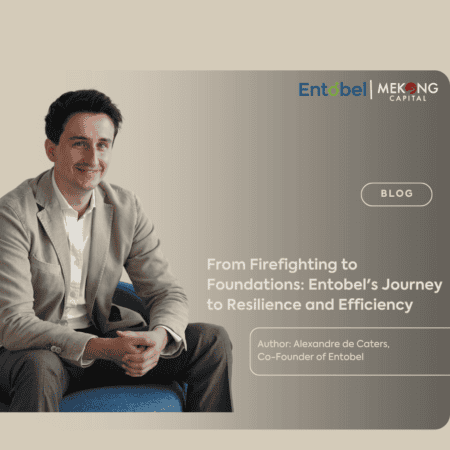
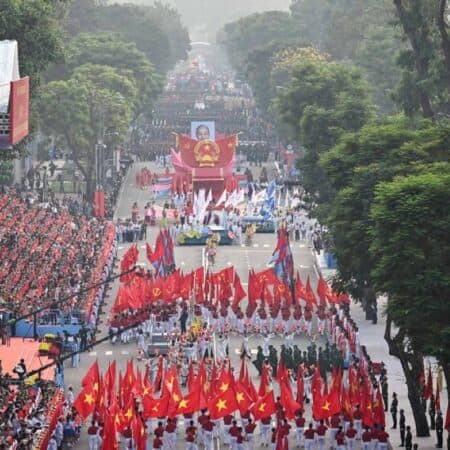
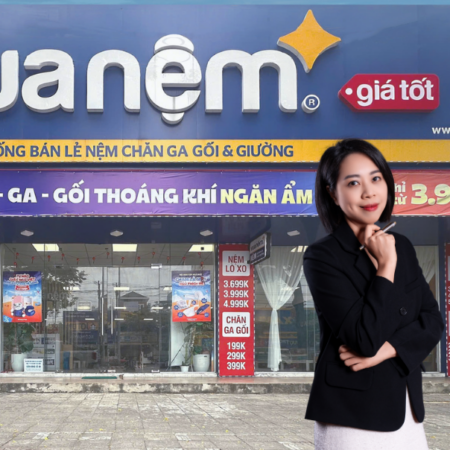
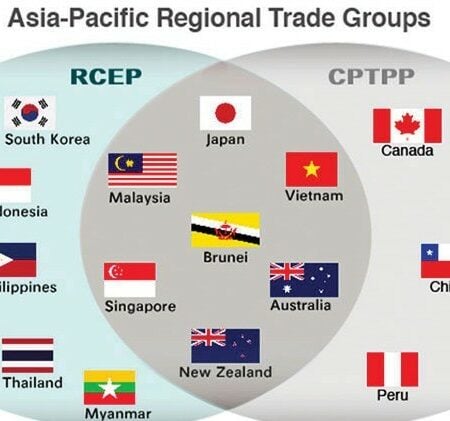
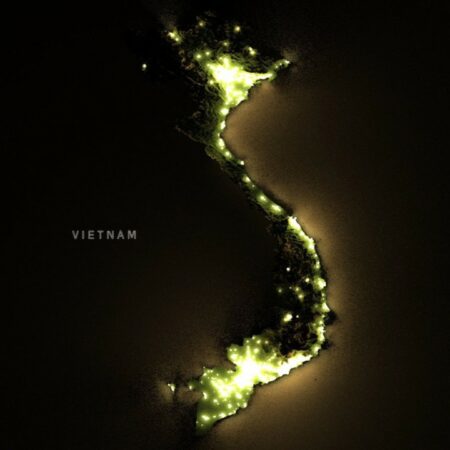
Leave a Reply